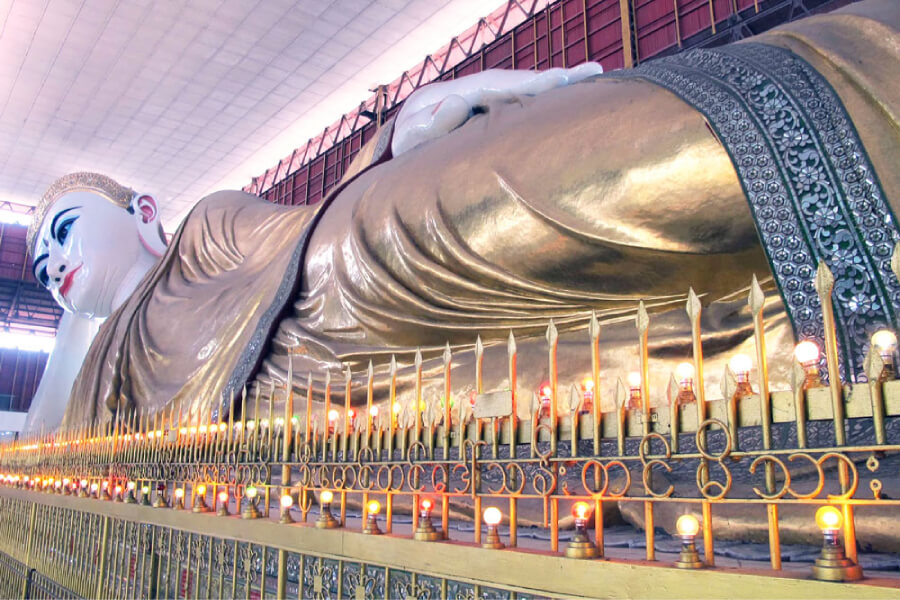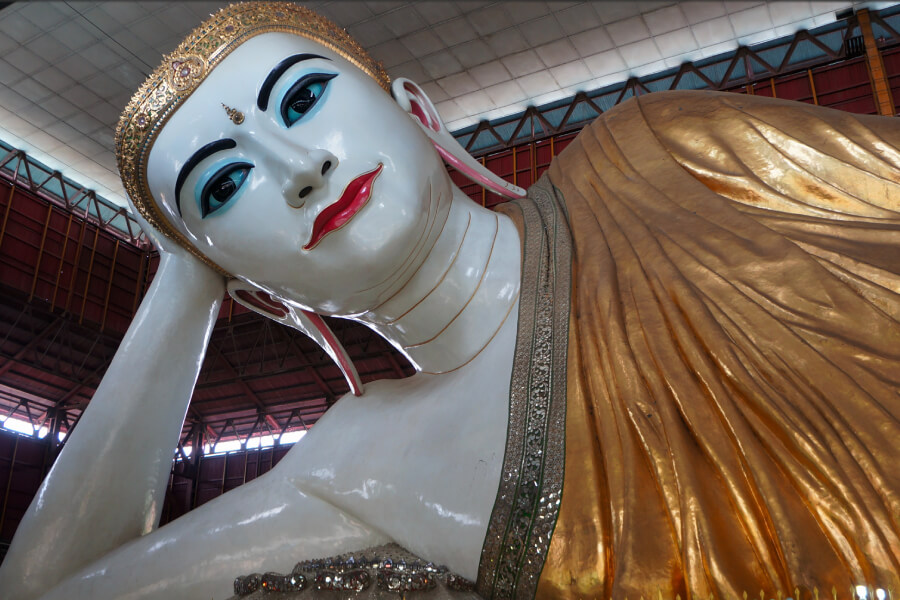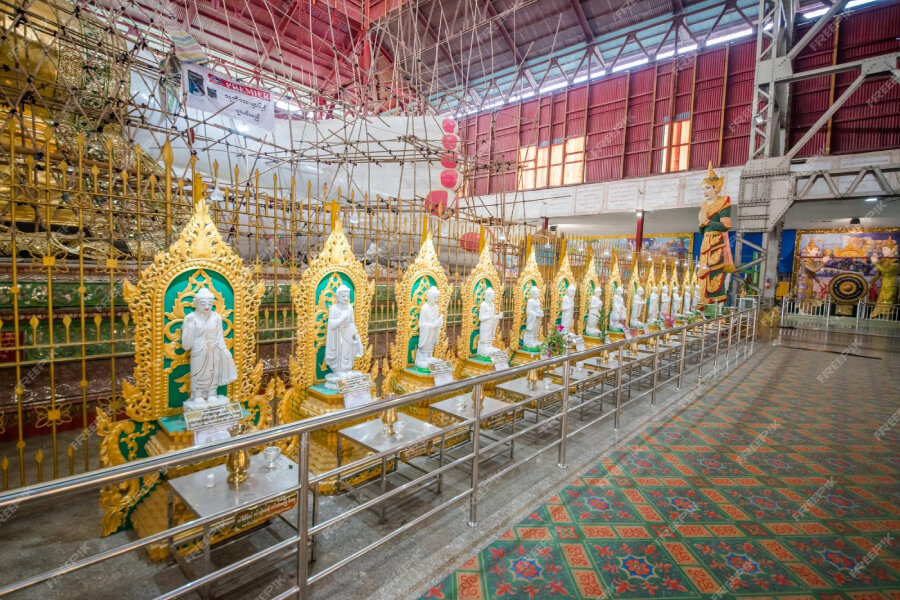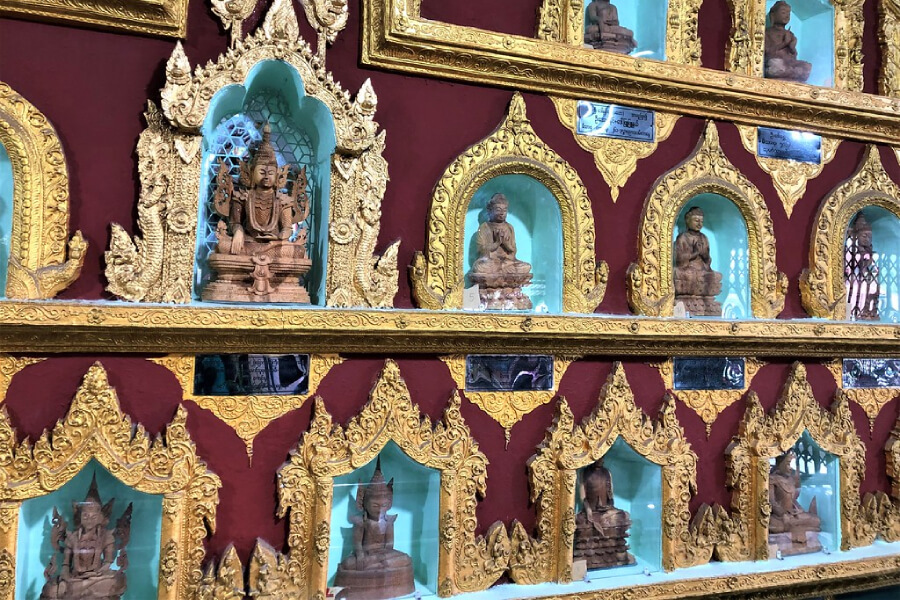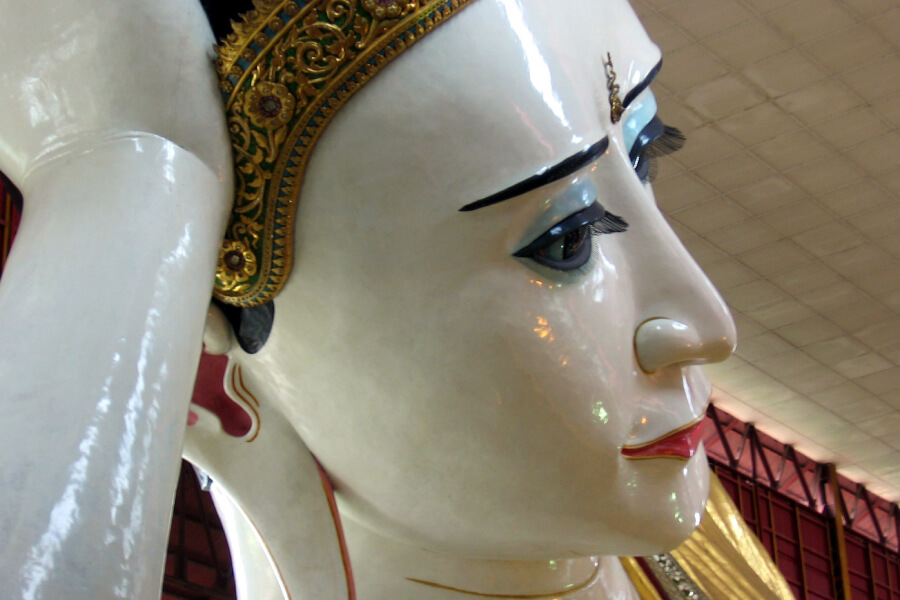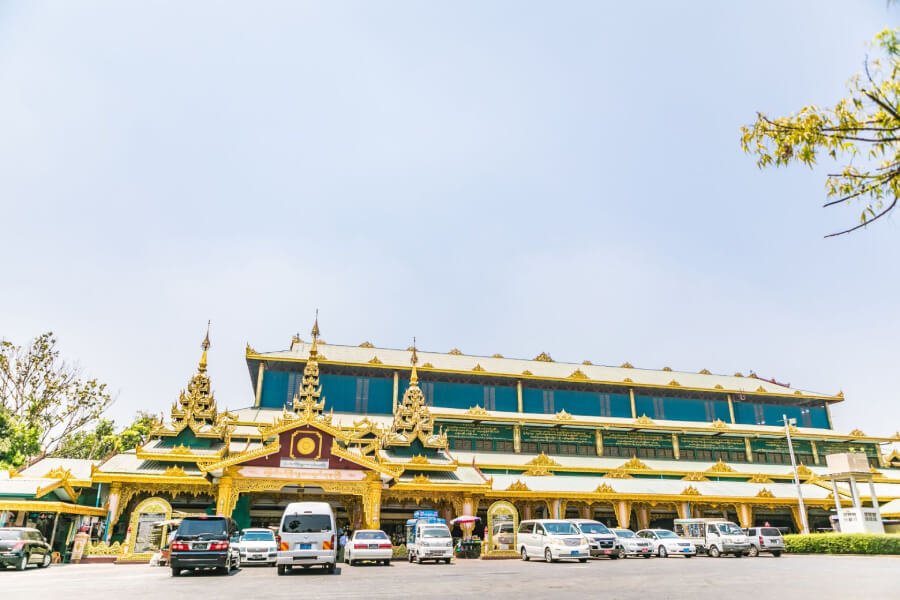Chaukhtatgyi Paya, located in Yangon, Myanmar, is a spiritual treasure and a prime attraction for those on Myanmar tours. This spiritual haven is renowned for its colossal Reclining Buddha, a 66-meter-long statue that embodies the historical Buddha’s path to enlightenment, exuding an aura of serenity. As a significant spiritual and cultural landmark in Myanmar, the temple draws both devotees and tourists. Visitors on Myanmar tours have the opportunity to immerse themselves in the temple’s tranquil ambiance, surrounded by lush greenery, and witness the awe-inspiring presence of the Reclining Buddha, making it an essential stop on their journey to explore Myanmar’s rich heritage and spiritual traditions.
The Historical Tapestry of Chaukhtatgyi Paya
The historical evolution of Chaukhtatgyi Buddha Temple adds a layer of intrigue to its already captivating narrative. Originally, this revered temple was home to an open-air sitting Buddha, a symbol of serenity and devotion. However, the temple’s history took a dramatic turn during the turbulence of the Second World War.
In a tragic episode, the temple and its open-air Buddha were subjected to the destructive forces of war, as it was blown up by the Japanese during the conflict. This event, while devastating, marked a turning point in the temple’s history.
Following the conclusion of the war and the restoration of peace, the resilient spirit of the local community led to the temple’s reconstruction in 1953. It was during this period of renewal that the temple’s transformation took place, giving birth to the magnificent white Reclining Buddha that graces the temple today.
The Reclining Buddha, which now measures more than 20 meters in length and stands more than 5 meters in height, symbolizes not only the Buddha’s journey into Nirvana but also the enduring spirit of the people who rebuilt Chaukhtatgyi Buddha Temple. This transformation from an open-air sitting Buddha to the grand Reclining Buddha stands as a testament to the temple’s resilience, adaptability, and unwavering significance in Myanmar’s spiritual and cultural heritage.
Chaukhtatgyi Buddha Temple’s journey through history showcases the strength of faith and the ability to rebuild and preserve in the face of adversity. It remains a living archive of Myanmar’s past, a reminder of the nation’s enduring spirit, and a symbol of the power of unity and devotion.
The Magnificent Chaukhtatgyi Paya
The history of the Reclining Buddha at Chaukhtatgyi is a testament to resilience and devotion. When the temple was first established in the mid-20th century, the statue was constructed from bamboo and stucco. It was a humble beginning for an image that would eventually become a majestic work of art.
The journey from those modest origins to its present-day grandeur is marked by extensive renovations. The statue was transformed into the pristine white marvel that now graces the temple. The Reclining Buddha has undergone a remarkable metamorphosis, evolving from simple materials to the breathtaking embodiment of faith and craftsmanship we see today.
For devout Buddhists and curious travelers alike, visiting the Reclining Buddha at Chaukhtatgyi is a pilgrimage of reverence. The atmosphere around the statue is one of tranquility and contemplation. Visitors are invited to witness and pay their respects to the embodiment of spiritual transcendence, to take a moment of introspection, and to find solace in the profound serenity that the statue exudes.
The Reclining Buddha at Chaukhtatgyi is more than a religious symbol; it is a cultural icon. Its presence not only evokes a sense of spiritual awe but also encapsulates the enduring connection between history, faith, and modernity. It serves as a bridge between past and present, illustrating Myanmar’s dynamic culture, where the timeless values of Buddhism harmoniously coexist with contemporary influences.
Chaukhtatgyi Paya: A Haven of Spiritual Connection
Chaukhtatgyi Buddha Temple is not just a place of worship; it’s a sanctuary for meditation, reflection, and spiritual connection. It transcends the realms of architecture and tradition, becoming a bridge between the material and the spiritual. Pilgrims and visitors from around the world are drawn to its tranquil atmosphere, seeking moments of introspection and solace. This spiritual haven invites all who enter to explore the depths of their own consciousness.
For centuries, temples and places of worship have served as points of spiritual convergence, where the human soul connects with the divine. Chaukhtatgyi Temple, with its resplendent Reclining Buddha and serene ambiance, exemplifies this tradition. The temple’s architectural design and spiritual significance intertwine to create an atmosphere that encourages visitors to detach from the distractions of the material world and embark on a journey within.
Chaukhtatgyi’s significance transcends its spiritual role; it extends into the realm of architectural harmony and cultural adaptability. The temple’s design is a remarkable fusion of Myanmar’s rich heritage and contemporary influences. Its structure, adorned with elegant spires and ornate detailing, seamlessly integrates the timeless values of Burmese culture with the demands of the present.
The architectural fusion of Chaukhtatgyi symbolizes the nation’s ability to embrace tradition without sacrificing modernity. It stands as a living testament to the resilience of Myanmar’s cultural heritage, where the past harmoniously coexists with the demands and influences of the present. The temple, with its architectural grandeur, showcases the adaptability and versatility of Myanmar’s culture and serves as a beacon of cultural harmony.
The Rituals and Offerings in Chaukhtatgyi Paya
Alms-Giving: A Ritual of Compassion and Merit
The first rays of the sun mark the inception of a profound ritual at Chaukhtatgyi – alms-giving. Each morning, a serene procession of monks, dressed in their saffron robes, walks through the neighboring streets to receive offerings from the faithful. These offerings encompass essentials such as food, clothing, and sustenance. Alms-giving isn’t merely an act of generosity; it’s a pathway to accumulating merit, a core concept in Buddhism. By presenting alms to the monks, devotees believe they are sowing the seeds of good karma, an investment in their spiritual journey.
Candlelight Offerings: Illuminating the Soul
As the sun gently descends and the temple’s surroundings embrace twilight, Chaukhtatgyi Paya metamorphoses into a mesmerizing landscape. Devotees light oil lamps and candles, kindling a radiant sea of flickering lights. This ritual symbolizes the victory of light over darkness, illuminating the path to spiritual awakening and inner tranquility. The gentle glow of the candles mirrors the illumination sought within one’s soul.
Meditation and Contemplation: The Inner Sanctuary
Beyond the external rituals, Chaukhtatgyi Paya serves as an inner sanctuary for meditation and contemplation. Both local and foreign visitors discover a quiet corner within the temple’s serene ambiance to engage in introspection. It’s an opportunity to establish a connection with one’s inner self, to untangle the complexities of the mind, and to discover solace within the spiritual symphony of Chaukhtatgyi.
Chaukhtatgyi Paya: Opening Hours
Opening Hours
Chaukhtatgyi Paya is open every day, providing visitors with the flexibility to explore the temple at any time. Whether you’re an early riser seeking a peaceful morning visit or prefer a serene evening experience, the temple is accessible day and night.
Visitor Tips
Dress Respectfully: As a site of religious significance, it’s crucial to dress modestly. Please ensure your attire covers your shoulders and knees as a sign of respect for the local customs and spiritual traditions.
Photography Guidelines: While most areas of the temple permit photography, always respect any posted restrictions or requests by the temple authorities. Seek permission when in doubt.
Local Vendors: Within the temple complex, you’ll find local vendors selling traditional crafts and souvenirs. Supporting these artisans allows you to take home a piece of Myanmar’s rich culture while contributing to the local community.

